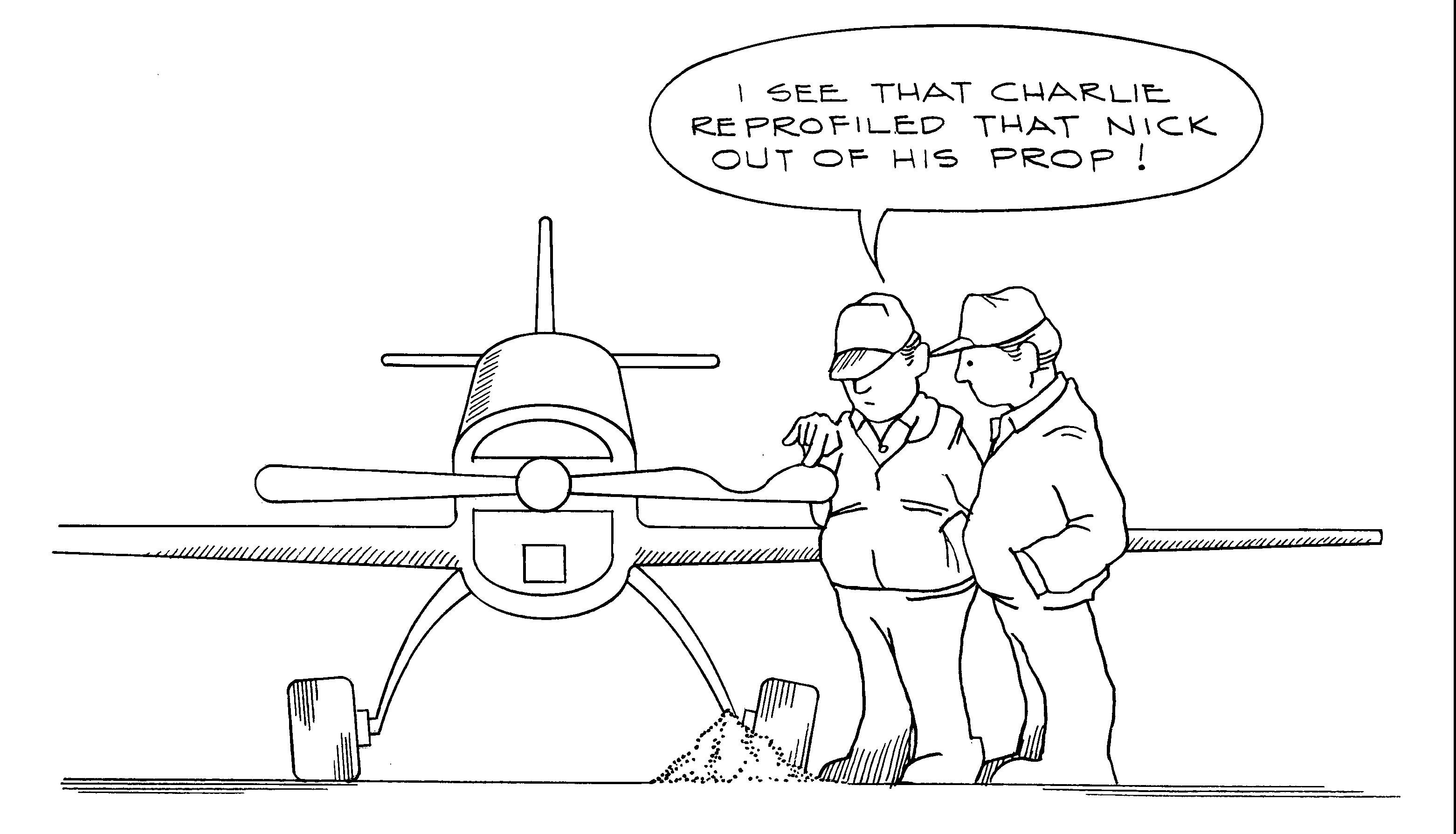

In the general aviation sector propellers are normally aluminium or wooden and composite props are normally used on higher end or commercial aircraft.
In the microlight sector we are fortunate in the availability of good composite props along with good quality wooden props, alloy props are not used much.
Constant speed units on GA aircraft are usually hydraulically operated and on microlights they are normally electric. These differences introduce
unique issues and items to be checked.
AC43.13-1b chapter 8 has a detailed section on alloy prop repair which in many respects would be transferable to wooden props.
Items to check when inspecting a wooden prop:
1, Check for dents and scratches.
2, Check for cracks, these would be expected after a ground strike.
3, Check for delamination
4, Check to ensure the varnish is not compromised, areas unvarnished will allow moister to enter the blade.
5, Check the prop bolts are torqued correctly, the wood can expand and contract with seasonal changes. A loose prop could be highly dangerous. Over tightening
can also damage the prop by crushing the timber cells, this could also be a cause of poor tracking if the bolts have been tightened unevenly.
6, If the prop bolts have been loose there is a chance that the holes through the prop are elongated or that the prop has become charred against the prop
flange, you may need to check this.
7, Check the leading edge protection, if it appears loose get it fixed before running the engine.
8, Check the tracking, page 42 of AC43.13-1b chapter 8 shows how to do this. If a props tracking is out it may cause serious vibrations and wont operate at
maximum efficiency.
Depending on the severity of the above they can all be repaired with the correct skill and knowledge.
Composite props are normally very robust but can still become damaged by stones etc. They will need most of the checks wooden props require including tracking
, bolt torques and leading edge protection, it is also possible for a composite prop to delaminate so check for this also.
Any damage or repair to a prop can affect its balance, unless the repair is very minor the prop will need to be rebalanced, the owner may need to show that
this has been done.
Constant speed or variable pitch unitís operate by twisting the blade or by rotating the entire blade (the latter being more usual). On microlights this is
normally controlled by an electric motor in the prop hub. Power is supplied via slip rings on the back of the prop hub. These need to be inspected and if
possible check to ensure there is full movement from fine to course, check the stops at the end of each pitch range.
On constant speed units there will be a feedback system to the pitch controller; this will be a pick up off the hub or an optical sensor of some sort. There
may even be a series of bar type codes around the back of the hub. No mater what system is used they will need to be clean and dirt free to operate properly.
Spinners also need to be checked regularly, their attachments can be prone to fatigue and cracking, a poorly fitted spinner can cause vibrations which will
ultimately compromise some other component of the aircraft engine or structure not to mention the possibility of it flying off and going through the prop.
MIL-P-5451 Propellers Fixed Pitch
MIL-P-5444 Propellers Detachable
AC20-37e.pdf AIRCRAFT PROPELLER MAINTENANCE
WOOD PROPELLERS:INSTALLATION, OPERATION, & MAINTENANCE Sensenich Wood Propeller Co., Inc.